Kongorinji 金剛輪寺
|
Title   • File Name • File Name   • Date • Date   • Position • Position   |
|
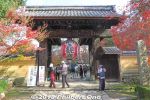
Kongorinji is a Tendai Buddhist temple established in 741 and the middle temple in the Koto Sanzan Temple Trio. The main temple hall is a National Treasure housing an 11-faced Kannon statue and 13 other statues designated as Important Cultural Properties.This is the Somon main gate to the temple. 総門
|
|
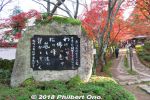
The temple was first built in 741 as ordered by Emperor Shomu. It later became a Tendai Buddhist temple in 850. It is famous for "blood-red" maple leaves in autumn.
|
|
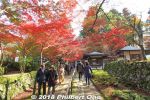
Off-season, normally you take a taxi (15 min.) from JR Inae Station if you don't have a car. There's a regular taxi that leaves the station once an hour.
|
|
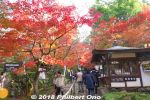
Temple ticket admission booth. ¥500 拝観受付
|
|
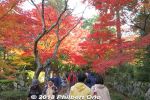
After the ticket admission booth, it's a delightful and colorful path to the temple.
|
|
|
|
|
|
|
|
|
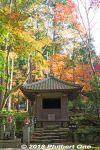
The first building you see. Nishiya-do hall housing Amida Nyorai buddha. Built in the Edo Period. 西谷堂 阿弥陀如来
|
|
|
|
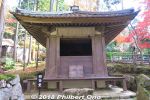
Nishiya-do hall housing Amida Nyorai buddha. Built in the Edo Period. 西谷堂 阿弥陀如来
|
|
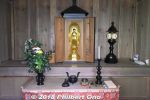
Inside Nishiya-do hall housing Amida Nyorai buddha. 西谷堂 阿弥陀如来
|
|
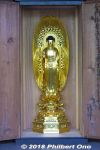
Nishiya-do hall housing Amida Nyorai buddha. Kongorinji Temple, Aisho, Shiga. 西谷堂 阿弥陀如来
|
|
|
|

Akamon Gate 赤門
|
|
|
|
|
|
|

About Kongorinji's famous temple garden.
|
|
|
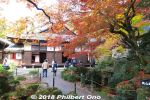
Famous temple garden built in the Momoyama Period (16th c.) to Edo Period. The building is the Kongorinji priest's residence. 名勝庭園 本坊
|
|
|
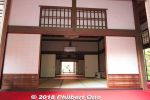
Priest's residence next to the famous garden. Reconstructed in 1978. 明寿院
|
|
|
|
|
|
|
|
|
|
|
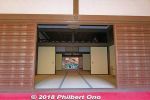
Priest's residence next to the famous garden. Reconstructed in 1978. 明寿院
|
|
|
|
|
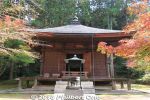
Jizo-do Hall built in 1997. Believers can train here. 地蔵堂
|
|
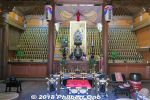
Inside the Jizo-do Hall built in 1997. 地蔵堂
|
|

Inside the Jizo-do Hall built in 1997. 地蔵堂
|
|
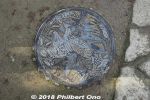
Aisho, Shiga manhole
|
|
|
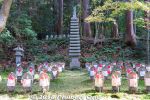
Garden of many Jizo statues.
|
|
|
|
|
|
|
|
|
|
|
|
|
|
|
|
|
|
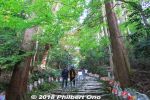
From here, the path to the temple (main hall) is lined with 1,000 Jizo statues.
|
|
|
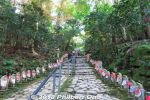
Long path of Jizo statues, a trademark of Kongorinji Temple.
|
|
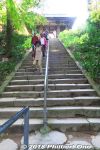
Steps to the Hondo main worship hall.
|
|

Hondo main hall
|
|
|
|

Kongorinji's main temple hall is a National Treasure housing an 11-faced Kannon statue and 13 other statues designated as Important Cultural Properties. Aisho, Shiga.
|
|
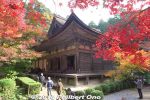
Built in 1288, Kongorinji Hondo main hall, National Treasure in autumn.
|
|
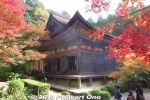
Kongorinji Hondo main hall, National Treasure amid autumn maple leaves.
|
|
|
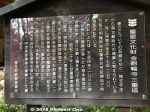
About the three-story pagoda, National Important Cultural Property.
|
|

Kongorinji's three-story pagoda, National Important Cultural Property.
|
|
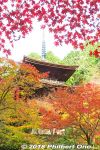
Kongorinji's three-story pagoda, National Important Cultural Property.
|
|
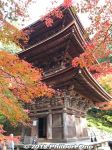
Kongorinji's three-story pagoda built in 1246, National Important Cultural Property.
|
|
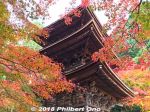
Kongorinji's three-story pagoda, National Important Cultural Property amid maple leaves.
|
|
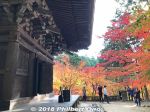
Kongorinji's three-story pagoda, National Important Cultural Property amid maple leaves.
|
|
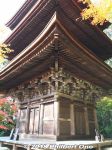
Kongorinji's three-story pagoda, National Important Cultural Property.
|
|
|
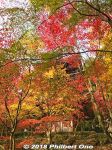
Path back to the main gate. Lots of eye candy.
|
|
|
|
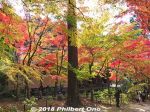
Another prime spot for autumn foliage at Kongorinji.
|
|
|
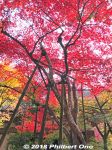
Looks like red maples are raining on you. Just spectacular.
|
|
|
|
|
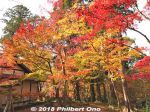
Autumn foliage near the Dojo.
|
|
|
|
|
|
|
|
|
|
|
|

Very artistic looking autumn leaves.
|
|
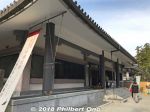
Aisho Town Museum.
|
|
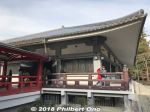
Aisho Town Museum.
|
|
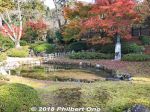
Small garden outside Aisho Town Museum.
|
|
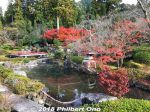
Small garden outside Aisho Town Museum.
|
|
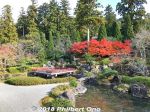
Small garden outside Aisho Town Museum.
|
|

Near Koongorinji's main gate is a parking lot and bus stop.
|
|
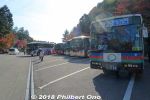
Shuttle bus on the right going to the next Koto Sanzan Temple.
|
|
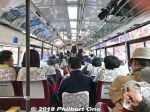
Inside the Koto Sanzan shuttle bus from Kongorinji to Hyakusaiji. Quite full this day.
|
|

Note: The following photos were taken years ago. More recent photos are at the beginning of this album. Kongorinji is a Tendai Buddhist temple established in 741 and the middle temple in the Koto Sanzan Temple Trio. The main temple hall is a National Treasure housing an 11-faced Kannon statue and 13 other statues designated as Important Cultural Properties.
They come by the busloads. If possible, you should avoid visiting the Koto Sanzan Temple Trio and Eigenji during the weekend in fall. If possible, you should avoid visiting the Koto Sanzan Temple Trio and Eigenji during the weekend in fall.
|
|

Front gate. The temple was first built in 741 as ordered by Emperor Shomu. It later became a Tendai Buddhist temple in 850. It is famous for "blood-red" maple leaves in autumn. Map
|
|

They come by the busloads. If possible, you should avoid visiting the Koto Sanzan Temple Trio and Eigenji during the weekend in fall. If possible, you should avoid visiting the Koto Sanzan Temple Trio and Eigenji during the weekend in fall. Stone marker.
|
|

Foilage on the path
|
|

Nice path with fall colors
|
|

More path foilage
|
|

It's all too beautiful
|
|
|
|
|

Finally we see a building
|
|

And more leaves
|
|

Entering the path of little stone Jizo statues
|
|

More Jizo statues
|
|
|

1000 Jizo statues. On Aug. 9, the Jizo statues are lit with candles.
|
|
|

On Aug. 9, the Jizo statues are lit with candles.
|
|

On Aug. 9, the Jizo statues are lit with candles. Kongorinji temple in Aisho, Shiga.
|
|

On Aug. 9, the Jizo statues are lit with candles.
|
|

Tour bus parking halfway up the mountain
|
|

Gate to main hall. Tendai Buddhist temple established in 741 and the middle temple in the Koto Sanzan Temple Trio.
|
|

Kongorinji's main temple hall is a National Treasure housing an 11-faced Kannon statue and 13 other statues designated as Important Cultural Properties. Aisho, Shiga.
|
|

Kongorinji's Temple Hondo, a National Treasure in Aisho, Shiga.
|
|

Temple Hondo, a National Treasure
|
|

Temple Hondo
|
|

Temple Hondo
|
|

3-story pagoda
|
|

3-story pagoda, reconstructed in 1978
|
|

3-story pagoda
|
|

Yellow and red
|
|

More yellow and red
|
|
|

3-story pagoda
|
|

3-story pagoda
|
|

Inside 3-story pagoda
|
|

Kongorinji's Main temple roof drowning in fall leaves
|
|
|
|
|

Beauitful leaves
|
|
|

Temple bell
|
|
|

On Aug. 9, the Jizo statues are lit with candles.
|
|
|
|
|
|

Garden at Kongorinji
|
|

Garden
|
|

"Blood-red" maples
|
|

Garden
|
|

Garden
|
|

"Blood-red" maples
|
|
|
|
|
|
|
|
|